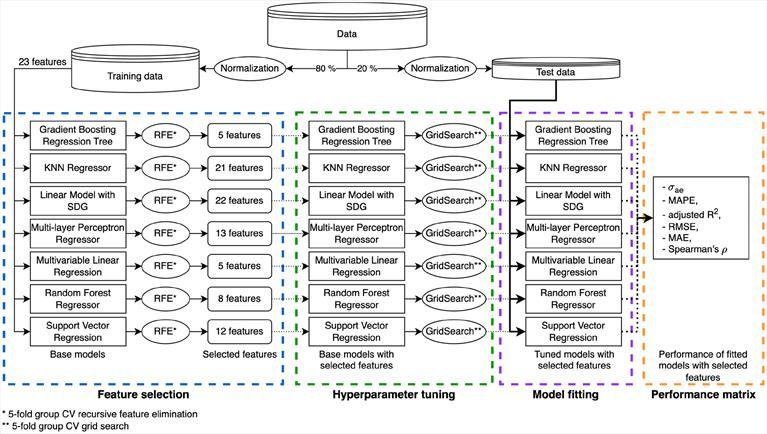Benjamin P. Geisler
@ben-geisler.com
170 followers
410 following
99 posts
Stipendiat in Oslo, 🇳🇴 | prior hospitalist | Stuck between 3 continents/still fresh off the boat | RT≠opinion≠others'
Posts
Media
Videos
Starter Packs
Benjamin P. Geisler
@ben-geisler.com
· Sep 3

Comparing supervised machine learning algorithms for the prediction of partial arterial pressure of oxygen during craniotomy - BMC Medical Informatics and Decision Making
Background and Objectives Brain tissue oxygenation is usually inferred from arterial partial pressure of oxygen (paO2), which is in turn often inferred from pulse oximetry measurements or other non-invasive proxies. Our aim was to evaluate the feasibility of continuous paO2 prediction in an intraoperative setting among neurosurgical patients undergoing craniotomies with modern machine learning methods. Methods Data from routine clinical care of lung-healthy neurosurgical patients were extracted from databases of the respective clinical systems and normalized. We used recursive feature elimination to identify relevant features for the prediction of paO2. Six machine learning regression algorithms (gradient boosting, k-nearest neighbors, random forest, support vector, neural network, linear model with stochastic gradient descent) and a multivariable linear regression were then tuned and fitted to the selected features. A performance matrix consisting of standard deviation of absolute errors (σae), mean absolute percentage error (MAPE), adjusted R2, root mean squared error (RMSE), mean absolute error (MAE) and Spearman’s ρ was finally computed based on the test set, and used to compare and rank each algorithm. Results We analyzed N = 4,581 patients with n = 17,821 observations. Between 5 and 22 features were selected from the analysis of the training dataset comprising 3,436 patients with 13,257 observations. The best algorithm, a regularized linear model with stochastic gradient descent, could predict paO2 values with σae = 86.4 mmHg, MAPE = 16 %, adjusted R2 = 0.77, RMSE = 44 mmHg and Spearman’s ρ = 0.83. Further improvement was possible by calibrating the algorithm with the first measured paO2/FiO2 (p/F) ratio during surgery. Conclusion PaO2 can be predicted by perioperative routine data in neurosurgical patients even before blood gas analysis. The prediction improves further when including the first measured p/F ratio, realizing quasi-continuous paO2 monitoring.
bmcmedinformdecismak.biomedcentral.com
Benjamin P. Geisler
@ben-geisler.com
· Aug 24

RFK Jr demanded a vaccine study be retracted — the journal said no
Nature - In a rare move for a US public official, health secretary Robert F. Kennedy Jr called for a Danish paper finding no link between aluminium in vaccines and disease to be retracted.
www.nature.com
Benjamin P. Geisler
@ben-geisler.com
· Aug 15
Benjamin P. Geisler
@ben-geisler.com
· Aug 15












